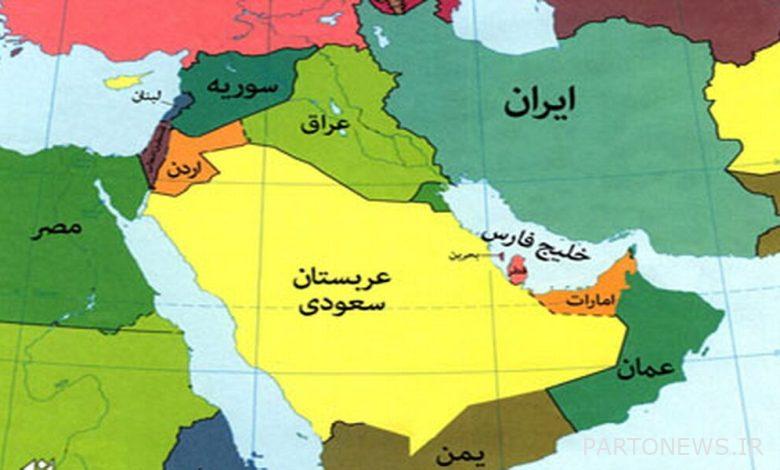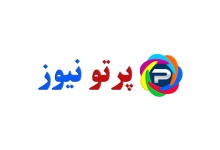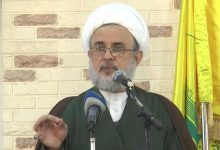Application of diplomatic strategic theory in regional stabilization

In the following note of the 10th of Aban 1400 Iranian newspaper, written by Ebrahim Mottaghi, a professor at the University of Tehran: Iran’s role in the regional context is related to the situation in which the United States used the mechanisms of “regional turmoil.” Conservative American theorist Michael Laden presented the “constructive destruction” approach as a theoretical framework for George W. Bush’s military invasion of Iraq and Afghanistan. It was on this basis that Bush Jr. put the “preemptive war” approach on his agenda. The theory of pre-emptive war was not accepted by many of America’s allies in the Middle East and Europe.
To counter the instability resulting from the military and operational action of the United States, Iran has put on the agenda a strategy of regional stabilization through “responsible mapping.” Dealing with threats such as the US offensive policy in the regional environment, especially in Afghanistan and Iraq, required the use of mechanisms that could create a balance of power in the regional environment. Playing such a role required Iran’s responsible participation in organizing the revolutionary army in the regional environment. The US invasion of Afghanistan took place at a time when Iranian diplomacy was grounded in Afghanistan, which led to the martyrdom of some Iranian diplomatic, media and strategic agents.
1. Geopolitical reductionism and ignoring strategic action against threats
The concept of regional diplomacy is important in a context where structural agents of diplomatic action within the framework of “defense diplomacy” can play an effective role in regional security. Sardar Soleimani was able to provide such a process through the mechanisms of resistance and the organization of a multinational resistance army. While some former Iranian diplomatic officials have suggested that in times of crisis, the State Department could use mechanisms to control threats through diplomatic means.
While these same people were not able to organize the necessary ground to control the regional atmosphere of Iran in Afghanistan during the Taliban and al-Qaeda. Whenever centrifugal actors like the Taliban of the 1991s, al-Qaeda and ISIS emerge, it seems natural to use tactical and strategic mechanisms of action to confront these actors. Ignoring the need for a balance of power to deal with rioters puts Iran’s society and national security in a geopolitical crisis, and such an approach could expose the future of Iran’s national security to unforeseen risks.
The former Deputy Foreign Minister for Asia, which covers the “Crescent” region from Afghanistan to the Arab Middle East, criticized the role of the resistance in the security process. He was able to interact with the international community in parallel with his fighters’ fight against ISIL, and without a slight change in his military policies, he could increase his role as a global player in the fight against ISIL terrorism.
Improve the position of the military as the savior of the world from the threat of a dangerous terrorist current and not allow even Russia to ultimately claim the need for Iran to withdraw from Syria. A few years ago, they wrote that if the Quds Force’s fight against ISIL was accompanied by wise and active diplomacy of the Iranian Foreign Ministry, the Quds Force would undoubtedly become a world rescue force from ISIL terrorism instead of an interventionist, and Iran could even prevent this situation. “Such an approach by a former State Department official reflects the tragic fact that, first, the role of defense diplomacy in the strategic sphere is being ignored, and it is felt that any confrontation with tactical threats must be addressed through the United States.” Obtain autoclaved diplomats. Dealing with field threats and field actors requires tactical action. Secondly, what does the issue of regional security in the turbulent Middle East from the 1370s onwards have to do with Donald Trump’s intention to leave the UN Security Council?
The expression of such approaches is that such diplomats are not aware that the main problem in Iran’s strategic planning was not in the regional environment, but rather in the orientation of nuclear diplomacy and the structure of the IAEA. The nuclear diplomacy marathon not only failed to meet Iran’s strategic needs and realities, but also plunged Iran into a dungeon that led to the reinstatement of economic sanctions and the expansion of the cost of living for Iranian society. It seems that Borjami’s friends are not aware that Borjam’s inefficiency and nuclear diplomacy have led to the formation of a tragic atmosphere for Iran’s political and social economy.
۲. Necessities of fighting tactical threats in the tactical arena
The main necessities for dealing with threats require that whenever an actor puts the role of a rioter on his agenda, the pattern and mechanisms of interaction must be used to create a balance. The realization of such an approach and strategy in the regional politics of Iran was achieved through the organization of the “revolutionary army”. The revolutionary army in question in Iran was multinational in nature, and Sardar Soleimani, for the first time, was able to organize the grounds for the formation of a “multinational revolutionary army” in a turbulent region.
Such a role has been considered by theorists such as Raymond Aron in the international relations literature. Raymond Aaron, one of the theorists of “historical realism of international relations”, theorizes the theory of “diplomatic strategy” and presents it as the infrastructure for empowering and securing countries in the field of international politics. Diplomatic strategic theory is important because it shows which actors in which environments have the necessary ability to play a role? Such a model has always been used by the great powers as part of their strategic policy and it is used to optimize the national security equation. For example, William Burns, the head of CIA during Biden’s tenure under President Barack Obama, entered the strategic areas of the State Department and served as political deputy.
Understanding the strategic necessity requires that internal theorists and analysts pay attention to the fact presented by “Joseph Frankel” that each institution has its own specific function and to deal with the patterns of aggressive action of actors must use mechanisms related to the balance of power. Took. The formation of the balance of power requires that a model be used that uses the policy of “threat against threat” and “tactical action against tactical threat” in a regional environment.
The importance of the revolutionary army in its political and strategic planning. The revolutionary army can pave the way for the expansion of the resistance front. The Resistance Front is related to the spirit and mental ideas of the Iranian society and considers it as a part of the mechanisms of identification and effectiveness of its regions. In his study of the Iranian idea, Graham Fuller points out that Iranian society, especially in the aftermath of the Islamic Revolution, had a pessimistic view of US interventionist and aggressive policies.
The concept of a revolutionary army has been enhanced by the strategic ideas of Sardar Soleimani. The revolutionary army in the past was formed on the basis of guerrilla warfare mechanisms. In the post-Cold War years, the historical era of guerrilla warfare came to an end and a new era based on revolutionary armies emerged. The main feature of the revolutionary army can be found in the identity and organization of the atmosphere of resistance. The idea of resistance is based on the identity needs and strategic needs of marginalized groups.
3. Using the Revolutionary Army to Manage Regional Crises
The revolutionary army has evolving historical roots. For the first time, national armies were formed after Westphalia, which were revolutionary in nature compared to the seasonal military forces. The main reason for such an approach can be traced to the organization and professional structure of the new armies. In the years following World War II, the groundwork was laid for guerrilla warfare. Guerrilla warfare generally faced structural challenges and was unable to make a fundamental impact on political change.
The idea of a revolutionary army can be considered as part of the signs of tactical action resulting from the Islamic Revolution of Iran. The idea of the Iranian revolution is associated with religious thought with signs of the export of the revolution, support for the oppressed, the organization of marginal groups, and a strategic approach to revolutionary groups. In Soleimani’s view, the revolutionary army is based on the organization of social groups to protect itself in the formation of the troubled region. Resistance is the basis of the ideology of marginalized identity groups and has created the basic infrastructure of the revolutionary army. Thus, the connection between the idea of resistance and the revolutionary army is the main axis of organizing the multinational army in the school of Sardar Soleimani.
Sardar Soleimani has tried to organize an identity and multinational army in order to create a new regional order and pass through the emperor-centered space. In the world of capitalism, all countries pay attention to the centrality of the empire. The centrality of the empire in the Franco colonial era seeks to exploit cultural, social, media, and communication mechanisms. On the other hand, if their interests are at stake, there will be no limits to cruelty, betrayal or savagery, because they themselves are the main sources of evil that has arisen. It is difficult for all social groups to move from this situation to the environment of non-revolutionary action.
4. The need for revolutionary action in the face of tactical threats
Confronting the system of domination in Sardar Soleimani’s thought and tactical practice has been part of the Iranian mentality and perception for finding a role in the regional environment. Such a mentality contradicts the Iranian spirit, which is based on signs of revolutionary action, libertarianism, justice, and political mobilization, and remains one of the mental challenges of Iranian society to the American view of Iranian governments. The Iranian mentality during the revolution and the years after the victory of the Islamic Revolution was formed on the basis of “confronting the regional role and the pattern of strategic action of the United States.” Lewis points out that the Middle East has faced security and strategic complexities since the victory of the Islamic Revolution.
The resistance force can create the necessary infrastructure for a revolutionary army. Any resistance will be a function of the mechanisms of identity action. Identities will play an effective role in the process of civilization. Civilization mechanisms can pave the way for such a transition with the least bloodshed and the greatest protection of the achievements of civilization. The purpose of organizing such a set of multinational forces to organize the identity army can be considered as optimizing the balance of power in the regional environment.
Result
The United States generally used the policy of aggression and the pattern of irresponsible action in relation to Afghanistan 2001 and Iraq 2003. The implementation of such a policy by George W. Bush intensified political and regional conflicts with Iran. In such circumstances, it seems natural that the game of politics with the United States should not be based on signs of cooperation and balance. The United States expanded its conflicts with the Iranian government and society by withdrawing from the UN Security Council and imposing unilateral sanctions. In such circumstances, it seems natural that the Iranian government does not equate any flexibility with the United States with the Iranian spirit and sees it as a new challenge in its future security.
The revolutionary army is considered as part of the strategic policy of the countries in the surrounding environment. A revolutionary army can have a liberating, liberating or identity nature. The revolutionary army of Sardar Soleimani is based on the characteristics of identity and resistance. The revolutionary army that Sardar Soleimani sought to form and expand had an identity, multinational, and structural nature. Each of these signs indicates that Iran has a central role in the geopolitics of the Islamic world and tries to use the mechanisms related to the Islamic Ummah in the context of identity conflicts.
The need to counter the escalating regional threats in Southwest Asia requires the Islamic Republic to use tactical action mechanisms to counter threats and threatening actors. Although the State Department can play its role as a facilitator of strategic issues in the regional sphere, we should all be aware that all US ambassadors to Afghanistan, Iraq, Sudan and Syria are people who have played an influential role for many years. US intelligence, security and strategic services were in charge.
For example, the role of David Petraeus as the US representative in Iraq. At one time, Petraeus was the commander of the “Central Command Force” known as “Centcom”. In another historical period, Petraeus became the head of the CIA. People like Petraeus have the ability to manage regional crises. They were able to put defense diplomacy mechanisms on the agenda.
The final question is how people like Petraeus are admired in the American diplomatic and intellectual space. While the mechanisms for creating a revolutionary army to counter threats through Iran’s patterns of indirect action against terrorist groups should be criticized by former officials at the State Department. Perhaps this issue can be considered as one of the indicators of “Iran’s tactical misery” in the process of regional security.
.

